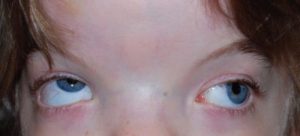ADULTS STRABISMUS

Strabismus is a common childhood condition in which the eyes are not aligned with each other. The term is from the Greek strabismós meaning ‘to squint’.
The most common misalignment is a horizontal deviation such as esotropia, where one or both eyes turn inwards or are ‘crossed’, and exotropia, where one or both eyes turn outwards or diverge. Vertical misalignment can also occur or there may be a mixture of both horizontal and vertical that varies in different positions of gaze. There may also be an associated compensatory head tilt or nystagmus (wobbly eyes).
Strabismus may be intermittent or constant. If constant, the image from the ‘turning’ eye is ignored by the developing brain, resulting in amblyopia or ‘lazy eye’. 3D vision (depth perception) may also be lost.
Strabismus has many causes. It may be congenital, related to an underlying refractive error (long sighted or unequal optical error), due to a muscle dysfunction, neurological or genetic causes, or any condition that causes reduced vision in an eye such as a congenital eye defect, cataract, trauma or infection. A rare but very serious cause, one not to be missed, is retinoblastoma, an intraocular tumour.
Risk factors for strabismus include prematurity, cerebral palsy, developmental delay, Down’s syndrome, eye disease or injury and a family history of the condition.
 Treatment depends on the type of strabismus and the underlying cause. This may include glasses and possibly surgery. Amblyopia treatment may also be required to restore vision in the turning ‘weak’ eye.
Treatment depends on the type of strabismus and the underlying cause. This may include glasses and possibly surgery. Amblyopia treatment may also be required to restore vision in the turning ‘weak’ eye.
For further information on strabismus surgery.
For additional information on strabismus please click links:
